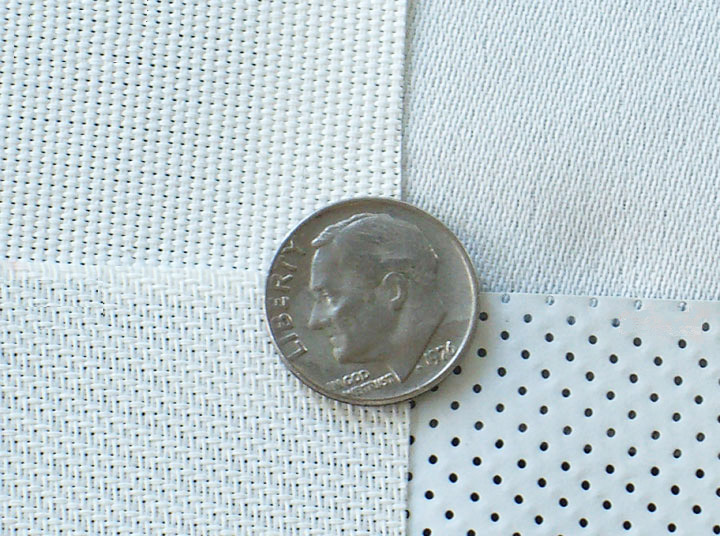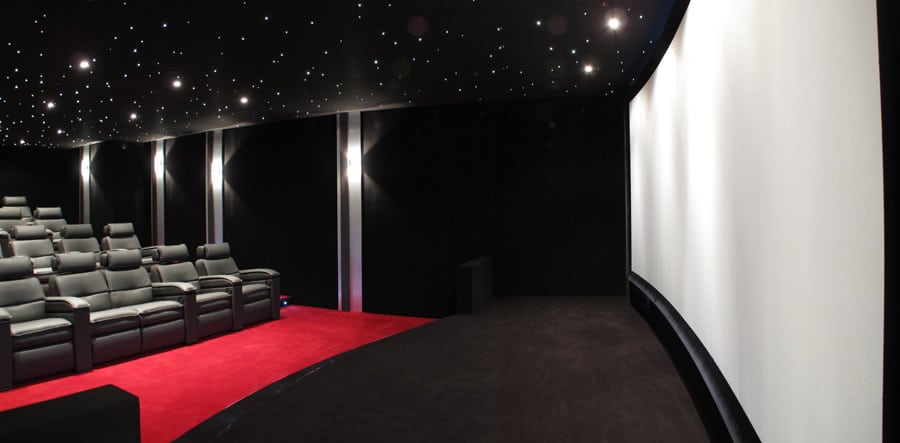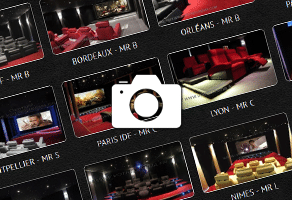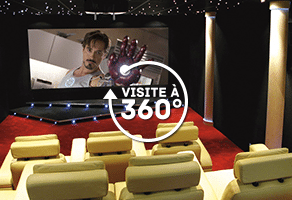The cinema screen
Like in a veritable cinema room, we recommend installing the FRONT speakers behind the screen (left, center, and right speakers and the subwoofer). To do this, the screen’s fabric must imperatively be acoustically transparent (this means that it allows sound to clearly pass through). The placement of the speakers is optimal for they are perfectly aligned behind the screen without a difference in height. The fusion is perfect between the image and the sound. As soon as the actor speaks, the sound goes out of their mouth at the same time (and not from a speaker positioned below the screen like you see far too often). This is another difference between a home cinema installation and the creation of a real private cinema room. Every detail counts.
Our choice in an acoustically transparent fabric: A model that is 4K compatible, in which the stitch and the weave are so fine, that not a single pixel from a projector passes through the fabric…. The result is an image that is true to its original design, its contour precision, its cinematic vision, all while being completely acoustically transparent. We have been installing this type of fabric since 2009, therefore well before the arrival of 4K projectors. This has permitted our clients to make a durable and viable investment. We have always been one step ahead. That’s our job.
Technically, a curved cinema screen also permits to offset the trapezium effect (also known as the cushion effect) of the image on the large bases of the screen (most frequently higher than 3m50). In this way image is less likely to go outside of the 4 sides of the screen’s frame.
Photo Gallery
Video Gallery
360° Visit in HD
Join our emailing list
Stay up to date with our latest news on Home Cinemas





